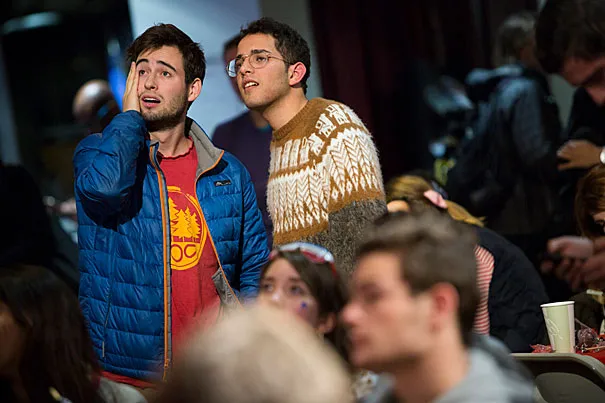Americans under 30 are so unhappy, they dragged the U.S. to one of its lowest spots ever on the world happiness list

The United States has a happiness problem. In the latest World Happiness Report, the U.S. dropped to No. 24—its lowest rank since the list began 13 years ago. Last year, it fell out of the top 20 for the first time. The report, based on responses from over 140 countries, evaluates how residents rate their quality of life. “That gradual decline in well-being in the United States is, if you start digging into it, especially driven by people that are below 30,” Jan-Emmanuel De Neve, professor at the University of Oxford and editor of the report, tells Fortune. “Life satisfaction of young people in the U.S. has declined.”
If the rankings only looked at people under 30, the U.S. wouldn’t even make it to the top 60. That explains the steep drop from No. 15 to No. 23 last year, and now this new low. “It is really disheartening to see this, and it links perfectly with the fact that it’s the well-being of youth in America that’s off a cliff, which is driving the drop in the rankings to a large extent,” says De Neve.
This shift is also shaped by income inequality. In contrast to top-ranking Nordic countries like Finland (No. 1), Denmark (No. 2), and Iceland (No. 3), the U.S. shows wider gaps in well-being. “In these Nordic Scandinavian countries, a rising tide lifts all boats, so the levels of economic inequality are much less, and that reflects in well-being as well,” says De Neve. “In Finland, most people will rate [their happiness] as seven or an eight, whereas if you look at the distribution of well-being in the States, there’s a lot of 10s out there, but there’s a lot of ones as well.”
This year’s report also placed greater focus on the role of social support and interpersonal trust. In 2023, almost 1 in 5 young Americans said they had no one to rely on. Dining habits were another red flag: solo dining in the U.S. has risen by 53% since 2003. De Neve explains that this lack of social interaction shapes how people see others. “You see an extraordinary increase in dining alone over the past two decades in the U.S.,” he says. “It’s the fact that people are increasingly on their own, isolated, their political thinking, their theories around life and society, are no longer tested by others … In our echo chambers, we develop these notions that others are to be distrusted, and we mistrust others, and migrants eat cats and dogs, all that kind of stuff. And as a result, we start believing these things. And the way we’ve picked up on that is really acute.”
Researchers measured distrust by asking people if they believed a stranger would return a lost wallet. U.S. respondents were more skeptical than those in Nordic countries. “It requires that strangers are to be trusted, that they will go beyond the call of duty and be kind and try and get it back to the rightful owner, or drop it with the police, which means you need to trust the police,” De Neve says. “That single item of the wallet drop is very powerful.”



